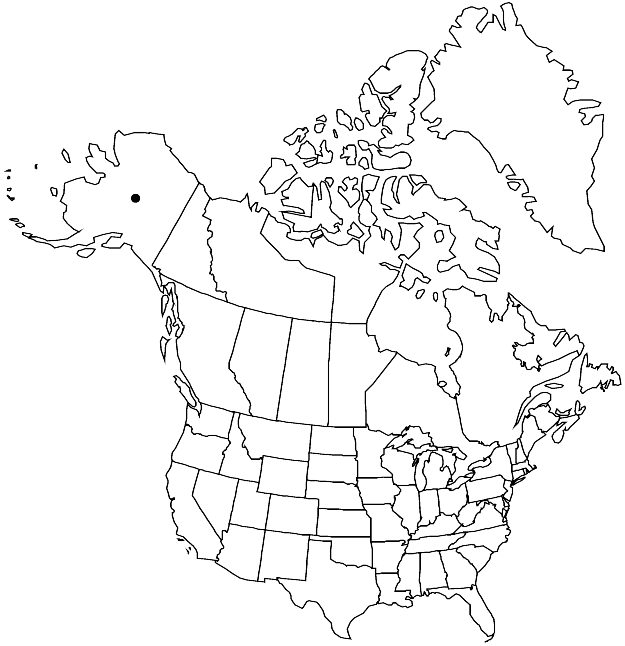Draba mulliganii
Harvard Pap. Bot. 14: 85. 2009.
Perennials; (cespitose); caudex branched (with persistent leaves); often scapose. Stems unbranched, 0.3–1.2 dm, glabrous throughout or sparsely pubescent proximally, trichomes short-stalked, 4–10-rayed, (non-crisped). Basal leaves rosulate; subsessile or shortly petiolate (petiolar base and proximal margin ciliate with stiff, subsetiform, simple trichomes, 0.3–0.6 mm); blade oblanceolate or lanceolate, 5–9 × 1–2 mm, margins entire, surfaces usually pubescent, abaxially with short-stalked, 8–12-rayed, stellate, (non-crisped) trichomes, 0.1–0.3 mm (often without spurred rays), rarely glabrescent, trichomes confined to margin, (midvein and petiole not thickened), adaxially with similar stellate and some simple trichomes. Cauline leaves 0. Racemes 3–11-flowered, ebracteate, elongated in fruit; rachis not flexuous, glabrous. Fruiting pedicels divaricate to ascending (not appressed to rachis), straight, (4–)5–9 mm, glabrous. Flowers: sepals (caducous), ovate, 1.7–2.2 mm, pubescent subapically, (trichomes simple and 2-rayed); petals white, broadly obovate, 3.2–4 × 2–3 mm, (apex obtuse); anthers ovate, 0.4 mm. Fruits ovate-lanceolate to oblong, not twisted, flattened, 5–8 × 2–2.5 mm; valves glabrous; ovules 12–16 per ovary; style 0.4 1 mm. Seeds ovoid, 0.7–1.1 × 0.5–0.6 mm.
Phenology: Flowering Jun–Jul.
Habitat: Limestone gravel around outcrops, limestone crevices, dry serpentine knolls in heath vegetation with patches of exposed slide rock, shale rubble slopes
Elevation: 300-1600 m
Distribution

Alaska.
Discussion
Selected References
None.